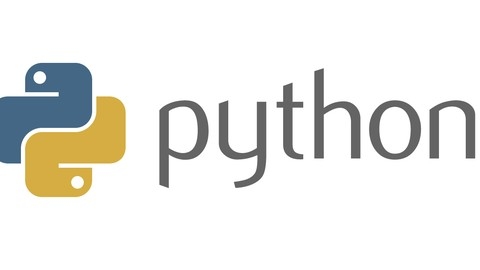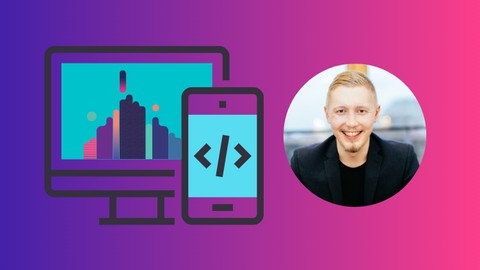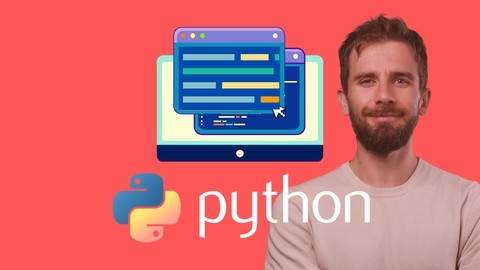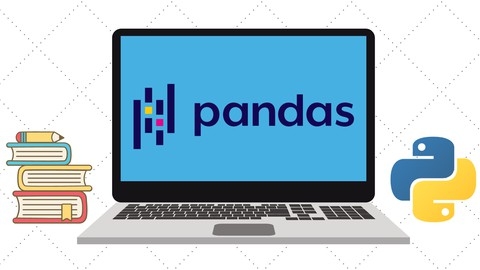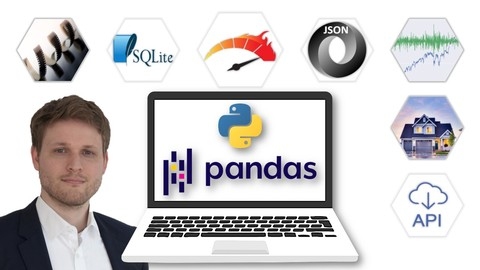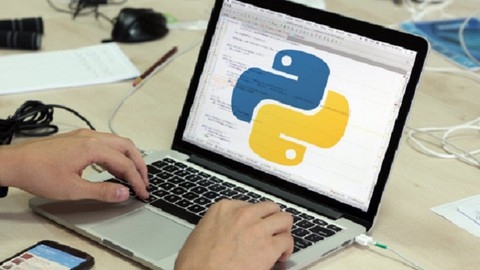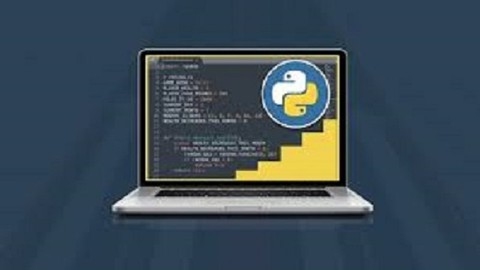Advanced Python programming opens doors to exciting domains like machine learning, web development, and data science.
Building upon core Python concepts, advanced techniques empower you to write more efficient, scalable, and elegant code, tackling complex projects with confidence.
Whether you’re aiming to build sophisticated applications, analyze large datasets, or contribute to cutting-edge research, mastering advanced Python is essential.
Finding the right advanced Python course on Udemy can be overwhelming, given the sheer number of options.
You’re searching for a course that not only covers advanced concepts but also provides practical exercises, real-world projects, and expert guidance to solidify your understanding.
Based on our in-depth analysis, we recommend Build a Backend REST API with Python & Django - Advanced as the best advanced Python course on Udemy overall.
This course dives deep into building robust and scalable REST APIs using Django, a powerful Python web framework.
It covers crucial aspects like test-driven development, API documentation, and deployment, equipping you with practical skills highly sought after in the industry.
However, if you’re looking for something more specific to your interests, we have a range of other excellent options to explore.
Whether your focus is on data science, machine learning, or web development, keep reading to discover the perfect advanced Python course on Udemy to elevate your skills.
Build a Backend REST API with Python & Django - Advanced
The course follows a test-driven development (TDD) approach, ensuring your code is thoroughly tested and maintainable.
You’ll start by setting up your development environment, including installing necessary tools like Python, Django, and Docker.
The course will walk you through creating a new Django project, configuring Docker Compose for containerization, and setting up continuous integration/continuous deployment (CI/CD) with GitHub Actions.
The course emphasizes the importance of test-driven development (TDD) and teaches you how to write effective unit tests using Django’s testing framework.
You’ll learn about mocking, testing web requests, and common testing pitfalls.
One of the first tasks is to create a custom user model for your Django project.
You’ll learn how to normalize email addresses, require email input, and add support for creating superusers through the command-line interface (CLI).
Next, you’ll configure the Django admin to work seamlessly with your custom user model.
This includes listing, modifying, and creating users through the admin interface.
Proper documentation is crucial for any API, and this course covers auto-generating API documentation using Django REST Framework’s drf-spectacular package.
You’ll learn how to set up Swagger UI for interactive documentation.
With the foundations in place, you’ll dive into building a user API.
This includes creating user endpoints for registration, authentication (using JSON Web Tokens), and managing user profiles.
The core of the course revolves around building a comprehensive recipe API.
You’ll learn how to create, list, retrieve, update, and delete recipes.
Additionally, you’ll implement features like uploading recipe images, managing tags, and handling ingredients.
To enhance the API’s functionality, you’ll implement filtering and searching capabilities.
This will allow users to filter recipes based on tags, ingredients, or other criteria, making it easier to find specific recipes.
Finally, the course covers deploying your Django REST API to Amazon Web Services (AWS) using Docker.
You’ll learn how to create an AWS account, set up a virtual server (EC2 instance), configure the necessary services, and deploy your application using Docker Compose.
Throughout the course, you’ll gain hands-on experience with various Django concepts, such as models, views, serializers, and viewsets.
The course also covers advanced topics like nested serializers, handling static files with Django and Docker, and refactoring for better code organization.
By the end of this course, you’ll have a solid understanding of building robust and scalable REST APIs with Python, Django, and the Django REST Framework.
You’ll be equipped with the skills to develop and deploy your own APIs, following industry best practices and adhering to test-driven development principles.
Intermediate to Advanced Python with 10 OOP Projects
You’ll dive straight into building a Geometry Game, learning the core concepts of object-oriented programming (OOP) like creating classes, using “self,” and defining methods.
This practical experience solidifies your understanding from the get-go.
You’ll then build a Flatmates’ Bill Sharing app, expanding your skills by working with external libraries, generating PDFs, and creating a command-line interface (CLI).
You’ll even learn how to deploy this app on Replit, a valuable skill for sharing your work.
This project reinforces OOP principles and shows you how to plan an application before writing any code.
The course continues to build your expertise with increasingly complex projects.
You’ll create a Math Painter app, working with image manipulation libraries, and a Webcam Photo Sharing app using Kivy for graphical user interfaces (GUIs).
These projects provide practical experience with image processing, camera input, and creating user-friendly interfaces.
You’ll then develop a Flatmate’s Bill Web App using Flask, learning about web forms, user data processing, and CSS styling.
You’ll deploy this web app on PythonAnywhere, gaining experience with server-side programming.
You’ll tackle even more advanced concepts with a Calories app involving web scraping, followed by an Automated Emails app where you’ll send emails programmatically and work with news feeds.
You’ll then build an Instant Dictionary web app using Quasar and create a Cinema Booking app with a full API implementation.
You’ll also explore databases, use Git and GitHub for version control, and learn to publish your own Python package to PyPI.
Throughout this course, you’ll use PyCharm as your IDE and follow best coding practices, including PEP 8 style guidelines and effective debugging techniques.
This intermediate Python course provides a comprehensive learning experience that takes your Python skills to the next level, preparing you for real-world projects.
The Ultimate Pandas Bootcamp: Advanced Python Data Analysis
You’ll start by learning the fundamentals of pandas Series and DataFrames, the core data structures for storing and manipulating tabular data.
You’ll dive into indexing, selecting, filtering, and transforming data using various methods like loc, iloc, and boolean masks.
The course covers handling missing data, performing descriptive statistics, sorting, and applying arithmetic operations on Series and DataFrames.
As you progress, you’ll learn advanced techniques for working with multiple DataFrames, such as concatenating, merging, and joining datasets.
The course also covers hierarchical indexing with MultiIndexes, enabling you to work with higher-dimensional data efficiently.
You’ll explore the split-apply-combine paradigm using groupby operations, allowing you to perform sophisticated data aggregations and transformations based on group characteristics.
Additionally, you’ll learn how to reshape data using pivoting and unpivoting techniques with pivot and pivot_table.
The course dedicates sections to working with dates and times, including parsing, creating date ranges, resampling time series data, and handling time zones.
You’ll also learn text manipulation techniques using regular expressions and pandas string methods for cleaning and preprocessing text data.
Data visualization is covered using matplotlib, enabling you to create various plots like line graphs, bar charts, histograms, and scatter plots to visually explore your data.
The course also touches on reading and writing data in different formats like JSON, HTML, and Excel.
Throughout the course, you’ll work with real-world datasets, reinforcing your learning with practical examples and skill challenges.
The appendices provide a rapid-fire introduction to Python fundamentals and instructions for local installation and setup.
Learn Advanced Python Programming
Building upon the foundations of beginner Python, this advanced course takes you from setting up your Python environment and IDE to mastering complex programming concepts.
You’ll begin with a deep dive into data structures, focusing on linked lists (single, double, and circular).
You’ll learn how to manipulate these lists, adding, removing, and rearranging elements, building a strong foundation for working with data.
You’ll then explore core Python concepts like magic methods, which let you control how operators like addition and comparison work in your code.
The course then covers threading, allowing you to run multiple parts of your program at once.
You’ll learn about locks and semaphores, tools that prevent conflicts when multiple threads access the same data.
You’ll even tackle the producer-consumer problem, a common challenge in multi-threaded programming.
This section also includes socket programming, where you’ll learn to build network applications, including a file server and a GUI chat room using TCP and UDP.
From there, you’ll move into more advanced Python techniques.
You’ll learn how to write more efficient and elegant code with comprehensions and decorators.
The course also covers metaclasses and descriptors, powerful tools for object-oriented programming.
You’ll gain practical experience with databases using SQLite3, learning SQL commands to manage and manipulate data.
You’ll also learn to send emails using SMTP, including HTML emails and attachments.
The course even introduces you to the Arcade module, allowing you to create simple games and animations.
You’ll learn to use Numpy for numerical computations and create different types of graphs, like line, bar, pie, and histograms.
The course culminates in several hands-on projects, solidifying your skills.
You’ll build a YouTube downloader using the pytube library, create a text editor, and even develop a music player, all with graphical user interfaces.
You’ll explore regular expressions for pattern matching, learn how to document your code effectively using docstrings, and even delve into co-routines, an advanced control flow technique.
You’ll also discover how to generate random numbers using the random module.
Python Data Science with Pandas: Master 12 Advanced Projects
The course starts by getting you set up with Anaconda and Jupyter Notebooks, essential tools for working with Python and Pandas.
You’ll dive right into hands-on projects, beginning with exploratory data analysis on a movies dataset.
You’ll learn to import data, clean it up, merge datasets, and work with different data formats like CSV, JSON, and databases.
The course covers working with APIs to fetch data, as well as web scraping.
A major focus is on data wrangling and preprocessing skills crucial for machine learning projects.
You’ll practice feature engineering and splitting data into training/test sets using datasets like housing prices.
For the finance enthusiasts, there are projects on backtesting investment strategies and index tracking with stock data.
The course doesn’t stop there - you’ll also learn advanced visualization techniques with Seaborn using datasets like Olympic games records.
Finally, you’ll prepare for the future by learning about the new features in the upcoming Pandas 1.0 version.
Throughout the course, you’ll work with diverse datasets across different domains, giving you well-rounded experience with the pandas library.
The hands-on projects ensure you gain practical skills that you can apply to your own data analysis tasks.
Learn Pro Advanced Python Programming
This advanced Python course begins with comprehensions, showing you how to write cleaner code for lists, dictionaries, sets, and generators.
You’ll compare them to lambda functions and see how to parse files efficiently.
You then move into descriptors, learning how to manage attribute access using properties, classes, and decorators, which enhances your object-oriented programming skills.
Linked lists come next, teaching you about singly and doubly linked lists.
You’ll learn to create, traverse, insert, and delete nodes, building a strong foundation in data structures.
The course then shifts to image and video processing with OpenCV.
You’ll work with images and videos, handling keyboard and mouse events, drawing shapes, and even using object detection.
Next, you’ll discover generators, learning how they manage memory efficiently.
You’ll also explore file management, covering reading, writing, appending, renaming, deleting, and saving different data types like dictionaries.
You’ll then uncover the power of magic methods, customizing how your classes work with operators, strings, and initialization.
Thread programming is also covered, introducing you to concurrency, parallelism, the threading module, and managing daemon vs. non-daemon threads.
You’ll even create small games using the Arcade module, adding images, timers, and user interaction.
You’ll then build a PDF audio reader, an email sender, and a text editor.
These projects combine many concepts, testing your Python abilities.
You’ll work with text formatting, file operations, scrollbars, menus, and email protocols.
You also explore graph creation, building line graphs, bar graphs, scatter plots, pie charts, and histograms using Python libraries.
The course dives into numerical computing with NumPy, teaching you about arrays, mathematical operations, scientific functions, and complex graphs.
With Pandas, you’ll learn data analysis, exploring and manipulating datasets.
Finally, you’re introduced to machine learning with simple and multiple linear regression, from theory to practical coding, building and interpreting your first models.
Advanced Foundations of Python Programming
This advanced Python course elevates your programming skills by exploring powerful tools and techniques.
You’ll begin with advanced collections like NamedTuples, DefaultDict, OrderedDict, Counters, Queues, and Deques, mastering efficient data organization.
This provides a solid base for tackling complex projects.
Next, you’ll dive into advanced function techniques.
You’ll learn zipping and unzipping iterables, evaluating Python expressions with exec, using memory views for optimized memory management, applying lambda functions for concise code, and mastering the enumerate function for efficient iteration.
These skills streamline your code and improve its performance.
You’ll then conquer *args and **kwargs, enabling you to write flexible functions that handle a variable number of arguments.
This crucial skill enhances code adaptability and reusability.
You’ll then explore iterators, iterables, and generators, essential for memory-efficient handling of large datasets.
You’ll also learn how to create custom generators.
The course then delves into object-oriented programming (OOP) with metaclasses, granting you control over class creation for building robust and extensible classes.
You’ll also master decorators, adding functionality to existing functions and methods without altering their core structure.
You’ll then learn comprehensions (list, dictionary, set, and tuple), writing concise and readable code for creating collections.
Finally, you’ll explore logging for efficient debugging and monitoring and learn to create custom calendars.
A bonus section provides additional valuable material.
This course equips you with the advanced Python skills necessary for tackling intricate projects and writing efficient, elegant code.
Make 20 Advanced Level Applications in Python
You’ll begin with networking, constructing a complete chat room application from the ground up using sockets.
You’ll even see how your application compares to WhatsApp!
This hands-on experience immediately puts your Python skills to the test.
From there, you’ll dive into practical tools like an automated email sender and a YouTube downloader.
You’ll master interacting with APIs, handling file formats (like PDFs), and managing online media.
These projects will give you valuable experience with libraries like smtplib for emails and pytube for YouTube downloads, solidifying your understanding of data processing and automation.
You’ll then tackle larger projects, including a music player, movie booking system, and even a restaurant management system.
These complex applications introduce database management with libraries like sqlite, user interface design using frameworks like Tkinter, and the integration of various functionalities into a single cohesive system.
You’ll learn to handle user input, manage data persistence, and build robust backend logic.
This course also empowers you to build desktop applications like a screenshot tool and a custom keyboard, using libraries like PIL (Pillow) for image processing and pynput for keyboard control.
You’ll also create an advanced BMI calculator, incorporating user input and data manipulation to produce meaningful results.
This practical experience will give you a strong foundation in application development.
Finally, you’ll explore machine learning, implementing algorithms like linear regression (simple, multiple, and polynomial), logistic regression, support vector machines (SVMs), and Naive Bayes.
You’ll work with libraries like scikit-learn to build and train these models, gaining a practical understanding of predictive analytics.
You’ll even build a Tic-Tac-Toe game using these techniques, demonstrating your ability to apply complex concepts to real-world scenarios.
